Noticed that your pet puffers behave strangely and wonder if that is a serious problem? Is that a sign to tell if your puffer fish is dying? This article lists 11 signs of a sick puffer fish and will help you tell what to do.
Puffers have a ravenous hunger and will eat almost as much as you can feed them. One of the first signs that your puffer may be ill is its rejection to eat. The characteristic “up and down” swimming shape and puffers going down to the bottom of the tank can occasionally be the signs of a sick puffer fish.
The principal concern is what happens to the pufferfish when the dive guide makes it blow up.
When a puffer fish puffs up, it takes in water to raise its size. It makes the puffer organs move to the side, inside the body, and the organs flatten.
In some cases, the puffer fish dies from this pressure.
I am super proud to see my knowledge helped many people save their puffer friends. Below is one of the hot-case in that we (I and Eric) managed to save a pufferfish when an owner reached us for help
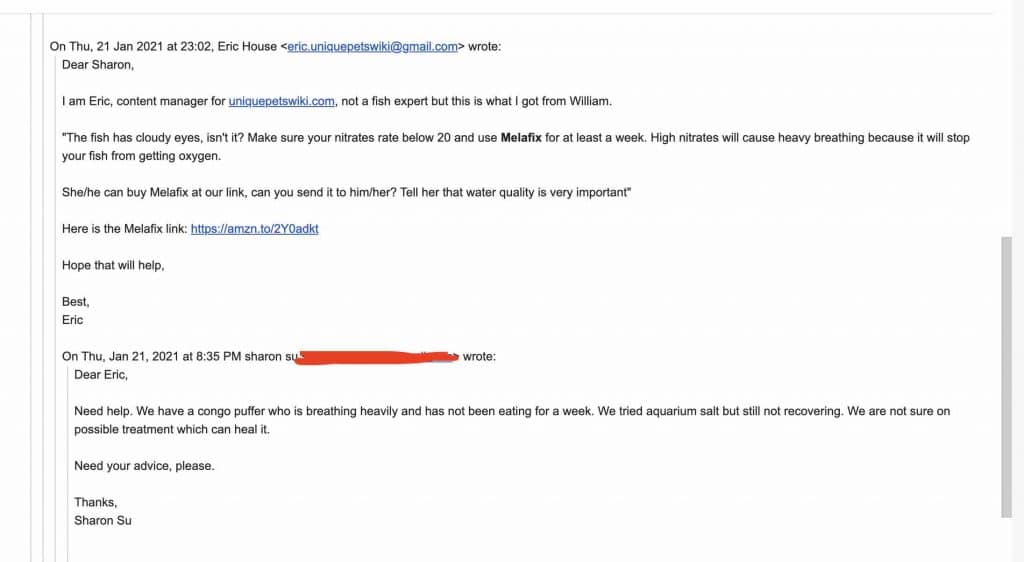
She followed our suggestion, and luckily, her congo puffer was saved!

For your base knowledge about the life matter of any fish. Water is the key. Controlling water conditions helps you save most of the sickness in fish.
Contents
The Danger of Diseased Fish
A diseased fish can damage your entire tank. To prevent or deter diseases from claiming your aquarium inhabitants, conduct a detailed visual examination of your fish to recognize any skin abnormalities and behavioral changes.
Parasitical, fungal, viral, and bacterial diseases can affect many body systems simultaneously and be highly transmittable, especially to other fish within the locality. Although only one fish may become ill at the opening, and it may seem very easy to handle, all the fish in the aquarium will quickly become sick in a short time if protection is not taken.
I suggest a careful physical and behavioral examination to detect any changes before the infection spreads. Knowing what to look for at the beginning of the disease will support in the safety of your aquarium.
Fish Disease
General Symptoms of a Sick Fish
Abnormalities on the fish’s body and its behavior are clues about the type of infection.
Fish are usually active.
Therefore, behaviors such as floating, sinking, and hiding is often symbols of a sick puffer fish.
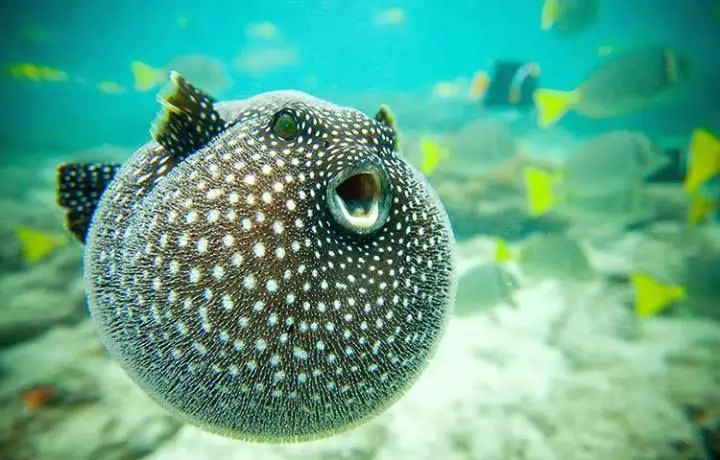
Another unusual behavior is itching against objects in the tank due to skin toxicities (parasite invasions). Lesions, spots, and puffiness on the fish’s body point out parasitical infections or chemical frustration.
Therefore, behaviors such as floating, sinking, and hiding is often symbols of a sick puffer fish.
uniquepetswiki.com
High stages of ammonia in the water can also harm fish; red streaks on the body and swollen red gills indicate bad water limitations.
Wounds on the skin can be a result of infective infections or a bite from additional fish
If your fish has distress living, it will be winded for air at the top of the tank, signaling unstable oxygen levels in the water.
Clamped fins specify water pH levels are below or under optimal levels.
This abnormality can also be seen during parasite attacks.
Internal digestion problems make fish bloat suddenly, which indicates bacterial pollutions.
If a fish go under to the bottom of the tank, this means the fish is at the end of its life
Sometimes it will stop drinking for more than two days. Or they puffed in the tank. That is a sign of stress. It happens when introducing new fish into the aquarium, under overcrowding, or under unsuitable ecological conditions.
Common Diseases Allied With Tank Problems
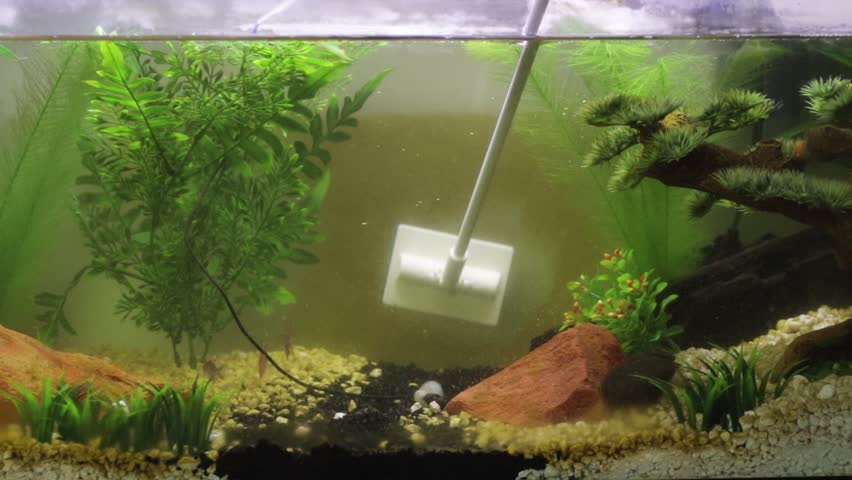
New Tank
New tank disease affects aquarium fish when the water ammonia level goes down.
In the new tank, ammonia intensities can increase faster due to a lack of constructive germs.
If the water is hazy in a new tank, your fish may die unexpectedly. As inhibition, the keeper should accomplish a container nitrogen cycle before the accumulation of fish.
Vitamin absences cause impaired fish development as well.
Scoliosis and slow growth indicate a nourishing deficiency, while a lot of equilibrium and swimming difficulties are signs of a Swim Bladder.
Mutual parasitical
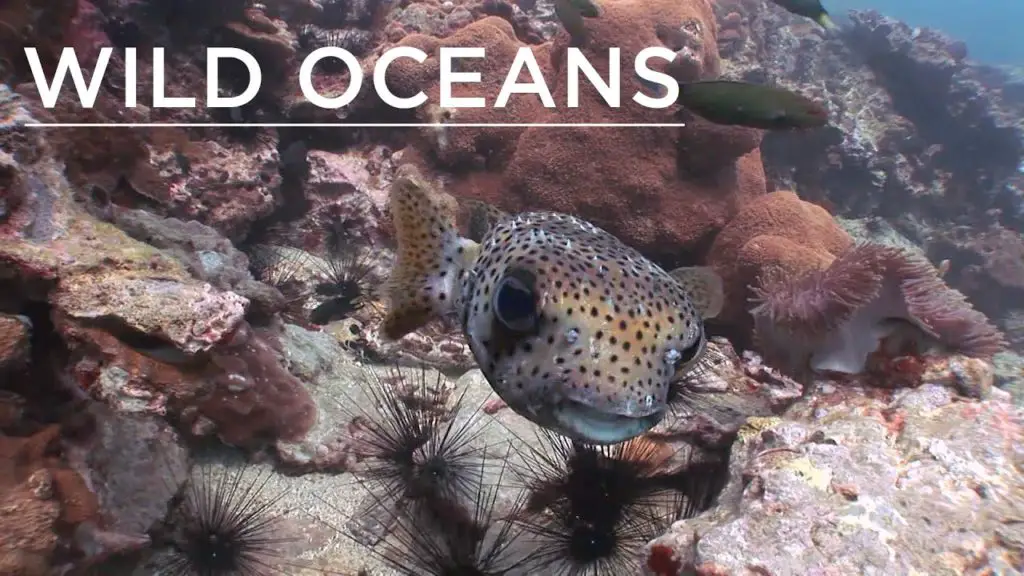
Mutual parasitical sicknesses such as anchor worms, Black Spots, Itch, Oodinium, External Parasites, and Planarian can strictly harm your fish and its tank mates.
Anchor worms are a whitish-green and red worm that exists in injuries and the skin of the fish.
Black speckles on the body designate Black Spot Infection.
Itch is deadly and establishes in small white pimples on the skin and fins — Gray to gold dust on the fish’s body facts to Oodinium.
Disagreeable sores on the skin are external organism assaults, and small white worms resembling hair are Planarian.
Bacterial infections
Pop Eye, Dropsy, Fin Rot, and Hole-in-the-Head are several varieties of bacterial infections.
Flanges of the eye indicate Pop Eye Sickness. Massive abnormal growth of the stomach with a loss of appetite is the sign of Dropsy. Fins become rough and white in the case of Fin Rot Syndrome.
Hole-in-the-head demonstrates with small holes around the head.
Mycological pollutions
Mycological pollutions are a sign of decreased immunity due to insufficiencies of essential nutrients in the fish.
Cataracts and Cotton Mouth are conjoint fungal infections. A foggy entrance in the eyes indicates cataracts.
Cotton Mouth manifests by the propagation of white fungus on the mouth.
Moreover, rats is another disease that disturbs fish and causes skin crossness.
The sickness usually affects outside or wild fish, then convert to indoor aquariums.
Lice carry germs and viruses and infect strong fish. Insects can be illustrious effortlessly on the skin of the fish as flat, dark, oval dots.
If the fish starts reproduction against the tank glass and red spots appear on the skin, the symptoms may indicate lice incursion.
In conclusion
Recall, you have to act as an investigator when it comes to your fish’s healthiness and well-being.
Always keep the water limitations where they need to be and check your fish every few days to ensure their body, eyes, fins, and mouth is undamaged and unsuspicious.
By doing so, you and your aquarium of fish will live a long, vigorous life.
Reasons Cause Pufferfish Sickness
Almost fish diseases are the result of stress, and poor water superiority plays a big factor in this.
The insertion of a good aquarium filter to maintain optimum water conditions can meaningfully reduce the risk of infection, as well as regular water changes.
As many aquarium keepers will know, there are hundreds of bacterial, parasitic, and fungal infections that can affect the health and well-being of your fish.
Contrary to general belief, fish are highly complex animals, and environmental changes, no matter how minor, can trigger periods of stress and illness.
11 Signs of Puffer Fish Diseases That Helps to Tell if Your Puffer Fish is Dying
To prevent fish disease, or to prepare yourself should disease or pollution become present in your fish tank, you may wish to consider:
- Invest big aquarium in a small fish tank to set up as a hospital tank. Treating an individual fish in a hospital tank will be both easier and inexpensive than treating your whole aquarium.
- Remove any activated carbon for the duration of behavior. Otherwise, it will absorb the medication from the water, making it useless.
- Most fish sicknesses are the result of stress, and poor water quality plays a significant factor in this. The inclusion of a good aquarium filter to maintain optimum water conditions can meaningfully reduce the risk of disease, as well as regular water variations.
- Freshwater aquarium salt can be added to your tank to help fish improving from illness. The electrolytes help to promote good health, heal wounds, and reduce stress levels.
- The regular addition of multivitamin conduct can help boost the immunity of your fish and help prevent disease, as well as for those recovering from an infection
- Fortunately, most diseases are easily diagnosed and treated. However, spotting the signs is often crucial to recovery.
Outlined below are a number of the more common fish infections to affect freshwater aquarium fish. That are not fully cover the question: “how to tell if your puffer fish is dying” but will somehow show you the potential symptoms of a dying puffer fish.
White Spot Fish Disease
Itch (Ichtyophthirius)
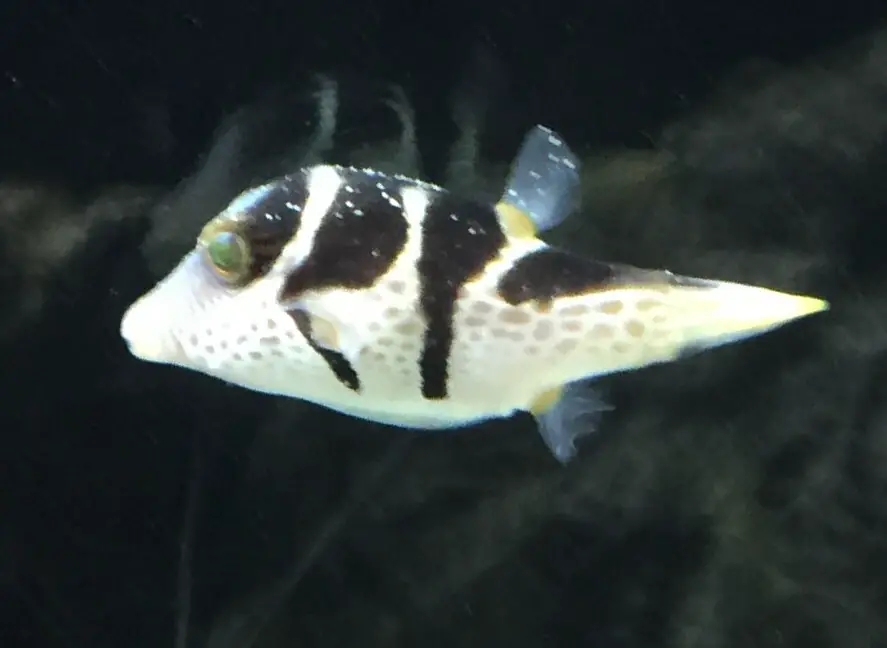
Cause:
It is most common for the craving to affect fish that are stressed, which is commonly caused by factors such as rapid temperature increases and pH variations.
Symptoms:
- White salt-like spots starting on the head and spreading over the whole body
- Rapid breathing or gasping at the surface of the water
- Glancing – itching itself against tank objects and gravel due to irritated skin
- Clamped fins
Treatment:
Itch is a common disease of fish, and if the treatment happen immediately, you can usually cure craving and avoid more severe stress and illness. White spot treatment is a low stress-inducing, gradually compounding treatment ideal for treating itch. However, this cannot treat sharks, rays, Harlequin Tusk fish, invertebrates, and other related species.
Haemorrhagic Septicaemia
Cause:
Haemorrhagic Septicaemia is a poison that is brought into aquariums by fish previously infested with the virus.
Symptoms:
- A variety of different signs may be present. However, some fish may show no signs
- Bruised-looking red type to eyes, coating, and gills
- Open sores
- Bulging eyes
- Distended abdomen
- Unusual performance
- Hemorrhaging of inner organs and skin
Treatment:
While you can treat your fish with a versatile antibiotic to try and reduce death, sadly, there is no identified cure for Haemorrhagic Septicaemia.
Fungus
Cause:
The most common causes of fungus include poor liquid quality and large quantities of decomposing material present in the aquarium. It often occurs when fish are distress from an injury or additional illness is present.
Symptoms:
- Initially, it looks like a white or grey growth in and on the skin, mouth or fins
- Over time the fungus will develop cotton wool like the entrance
- Excess mucus present
- If left untreated, the fungus will kill a fish by remaining to eat away at the fish’s body.
Treatment:
You can preserve this fungus with a fungal treatment with four separate solicitations to ensure that it does not burden the previously stressed fish.
Dropsy
Cause:
Bacteriological infection of the kidneys, which triggers fluid holding usually causes dropsy. However, it can also be the result of poor water quality and micro-organisms in your aquarium. The disease more commonly affects fish experiencing stress, which compromises their immune classification.
Symptoms:
- Swollen stomach
- Protruding scales around the puffy area
- Loss of appetite
- Sluggish and lack of dynamism
Treatment:
Catching the disease early is crucial to the success of behavior. You can apply a parasite treatment to your tank for two days, but one conduct should work.
Perhaps the essential treatment is to remove the underlying cause of stress for the fish and to provide supportive care to the sick puffers fish. Examining the water quality, infection, ammonia levels, tank mate compatibility, and other sicknesses present in the tank are highly recommended.
Fin Rot
Cause:
Fin Rot is often an indication extant in other illnesses. However, this can occur as a stand-alone issue. This is typically a result of a bacterial infection, which causes the tail or fins to fray as the body’s immune system is lowered while aggressive off the illness. Fin rot can also be encouraged by stress, where fish are bullied or injured by aggressive tank mates.
Symptoms:
- A liberal deterioration of the tail or fins
- Fins hue may fade
Treatment:
Firstly it is advisable to check that your pH levels are correct. Adding salt to the water can help treat this illness by adding electrolytes to benefit repair fins. Naturally, fin rot resolves itself over time. However, keepers can use a cure of Myxazin for the water.
Pop Eye (Exophthalmia)
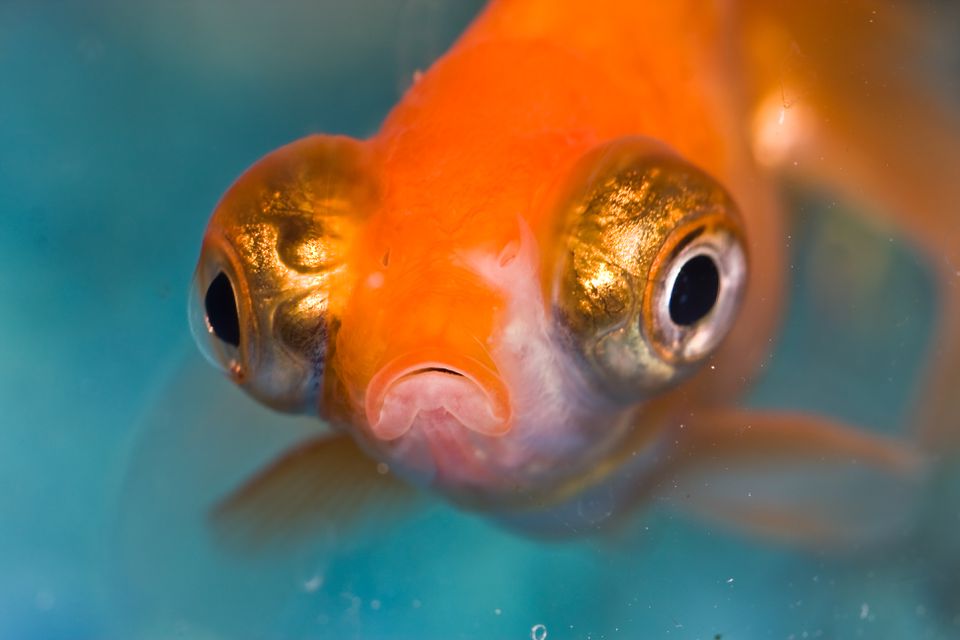
Causes:
Pop-eye is frequently the result of a bacteriological infection behind the eye, which causes them to bulge externally. However, it can be the result of other issues, such as poor water quality or damage.
Symptoms:
Huge protruding eyes, either one or individually eyes
Treatment:
- Pop-eye is very easy to classify. It can be more challenging to treat, as it has many thinkable causes.
- If it is upsetting more than one fish, water superiority is the likely culprit. Transfer out daily 30% water changes for up to five days and check your pH levels if it is the result of an injury, isolation your fish in an infirmary tank to let it recover.
- If both eyes are pretentious, it is more likely to be a bacterial poison, and an application of Myxazin to your water can resolve this.
Anchor Worms
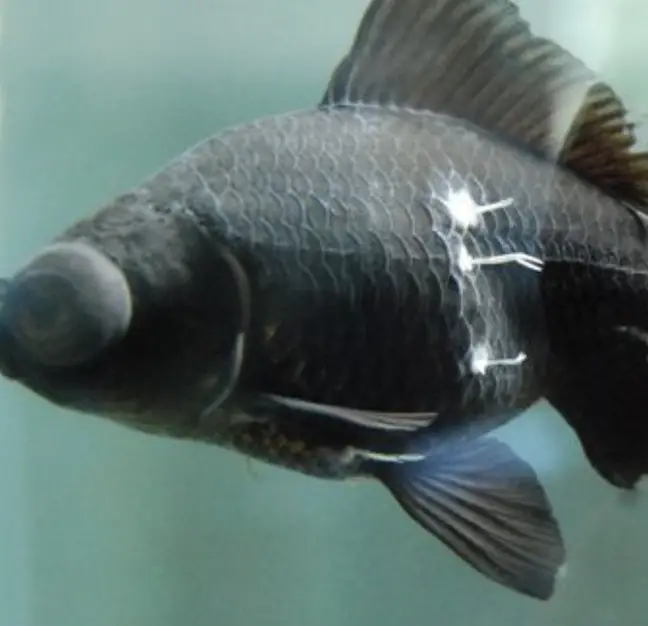
Cause:
Anchor larvae are minor parasites that burrow into the fish’s skin and enter the muscles where they lay their seeds.
They are the result of presenting new, infected fish into your tank.
Symptoms:
- String-like worms visible on fish’s skin
- Points of enhancement are marked by inflammation
- Glancing – scratching against objects to itch the infested area
Treatment:
A single dose water cure such as Aquarium Rescue Parasite Control can be applied to the water to destroy the parasites. Any visible wounds can be cleaned with a germ-killing like iodine.
Lice
Cause:
The attendance of insects usually stems from fish being familiarized with an aquarium that was previously housed in an outdoor pond.
Lice move from one host fish to another very rapidly, so quick action is vital to monitoring the spread of insects.
Symptoms:
- Lice look as if as flat, green/brown dots (up to one inch) crawling on the skin
- Red spots on fish caused by skin frustration
- Fish are aggravated and restless
- Glancing – scratching in contradiction of objects to itch the angry area
Treatment:
As with anchor worms, a single dose water behavior such as Aquarium Rescue Parasite Controller can be applied to the water to destroy the parasites. Any noticeable wounds can be cleaned with an antiseptic like iodine.
Clamped Fin
Cause:
Clamped fin is not one specific disease, but a result of numerous issues, such as inadequate water quality or parasitic effluence.
Symptoms:
- Fins are folded against the figure
- Leisurely, lethargic behavior
Treatment:
Initially, test the water in your fish tank and transfer out a partial water change. If the clamped fin is the result of impurity, a versatile antibiotic can be applied to the liquid, and adding one tablespoon of aquarium salt per gallon will also support.
Should it be the result of a parasitic poison, a single dose of water treatment such as Aquarium Rescue Parasite Control can be applied to the water to terminate the parasites?
Note – clamped fin is one of the signs of Septicemia, so it is essential to spot and treat this complaint early to prevent more severe illness in your fish.
Red or White Sores
Causes:
Many things can cause sores. Such as injury, fighting with tank mates, and small wounds that become septic.
Symptoms:
- Open sores that are white or red
- Lethargic presentation
- Possible fin rot
Treatment:
A new sore can usually be cured by totaling aquarium salt to the water to help repair the infected area.
Older or larger sores may be at a higher risk of bacterial poison, so the application of water treatment like Myxazin will help treat the affected sector.
Skin Flukes (Gyrodactylus)
Cause:
These small worm-like parasites are hardly noticeable to the bare eye but can enter your tank when you familiarize another fish or plant carrying the parasite or its seed.
Symptoms:
- Speedy breathing or breathless at the surface of the water
- Fast opening and closing of gills
- Mucus is current on the gills
- Spider web scrapes on the skin
- In more severe cases part of the gills may be eaten away
- Glancing – itching itself in the conflict of tank objects and gravel due to irritated skin
Treatment:
If left untreated, flukes will abolish the gills of your fish, and as a result, your fish will also die, so new behavior is critical.
For separately affected fish, frequent salt baths over two to three days can help.
The use of Stearin for ten days will destroy the parasites in all steps of their life cycle, also assisting in sterilizing the aquatic plants in your tank.
However, it is almost painful to remove the presence of flukes from your aquarium entirely.
It is highly expected that your entire tank may be unnatural by flukes in the future.
If you couldn’t find the solution to treat your pet puffers, here is the additional article that might help you save your pufferfish.
Final Thought
Finally, remember that pufferfish are some of the most incredulous and rare fish.
They not only deserve good care, but also require it to stay alive and healthy.
The best thing you can do is to buy a few of these products in case of emergency or so that you don’t have to be on edge or concerned.
Think of it as your emergency safety kit for your pufferfish ready when necessary.
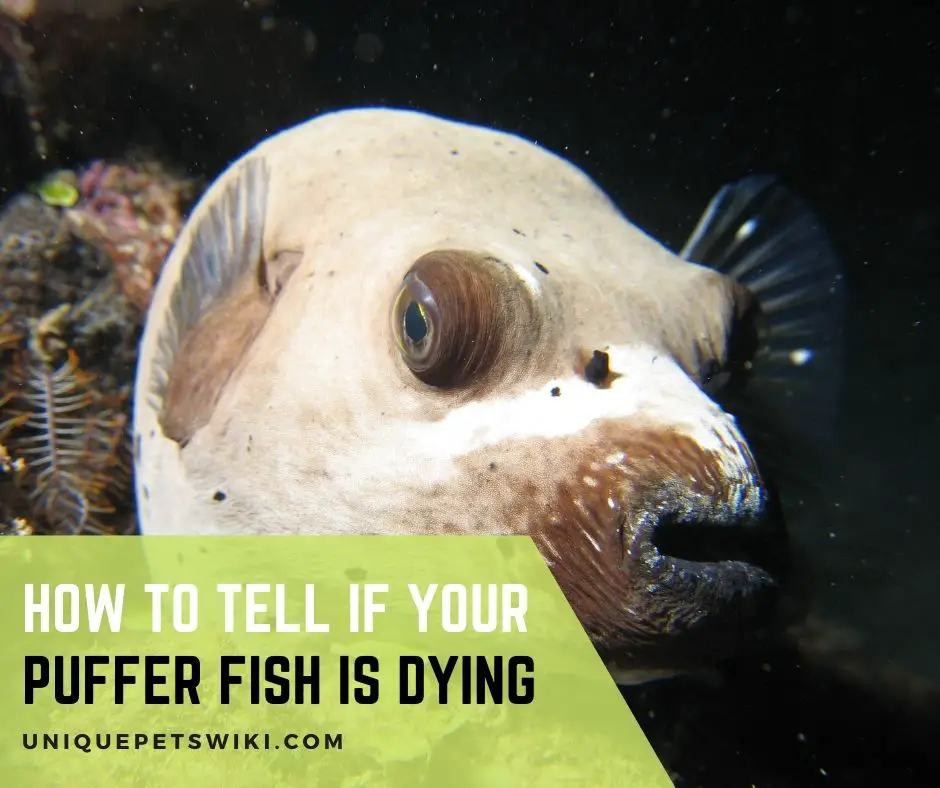
My puffer has a white small ball the size of a BB on his rudder fin??? What is it? How to treat
This is Fin Rot
Cause:
Fin Rot is often an indication extant in other illnesses. However, this can occur as a stand-alone issue. This is typically a result of a bacterial infection, which causes the tail or fins to fray as the body’s immune system is lowered while aggressive off the illness. Fin rot can also be encouraged by stress, where fish are bullied or injured by aggressive tank mates.
Symptoms:
A liberal deterioration of the tail or fins
Fins’ hue may fade
Treatment:
Firstly it is advisable to check that your pH levels are correct. Adding salt to the water can help treat this illness by adding electrolytes to benefit repair fins. Naturally, fin rot resolves itself over time. However, keepers can use a cure of Myxazin for the water.
I know this is an old post but if it looks like cotton just keep doing water changes and it should go way on its own if you keep the fish healthy…..I’ve had a porcupine puffer that had that problem and a file fish The white cotton on the fin came and went and Eventually it just went away …hope your fish is still alive and doing well